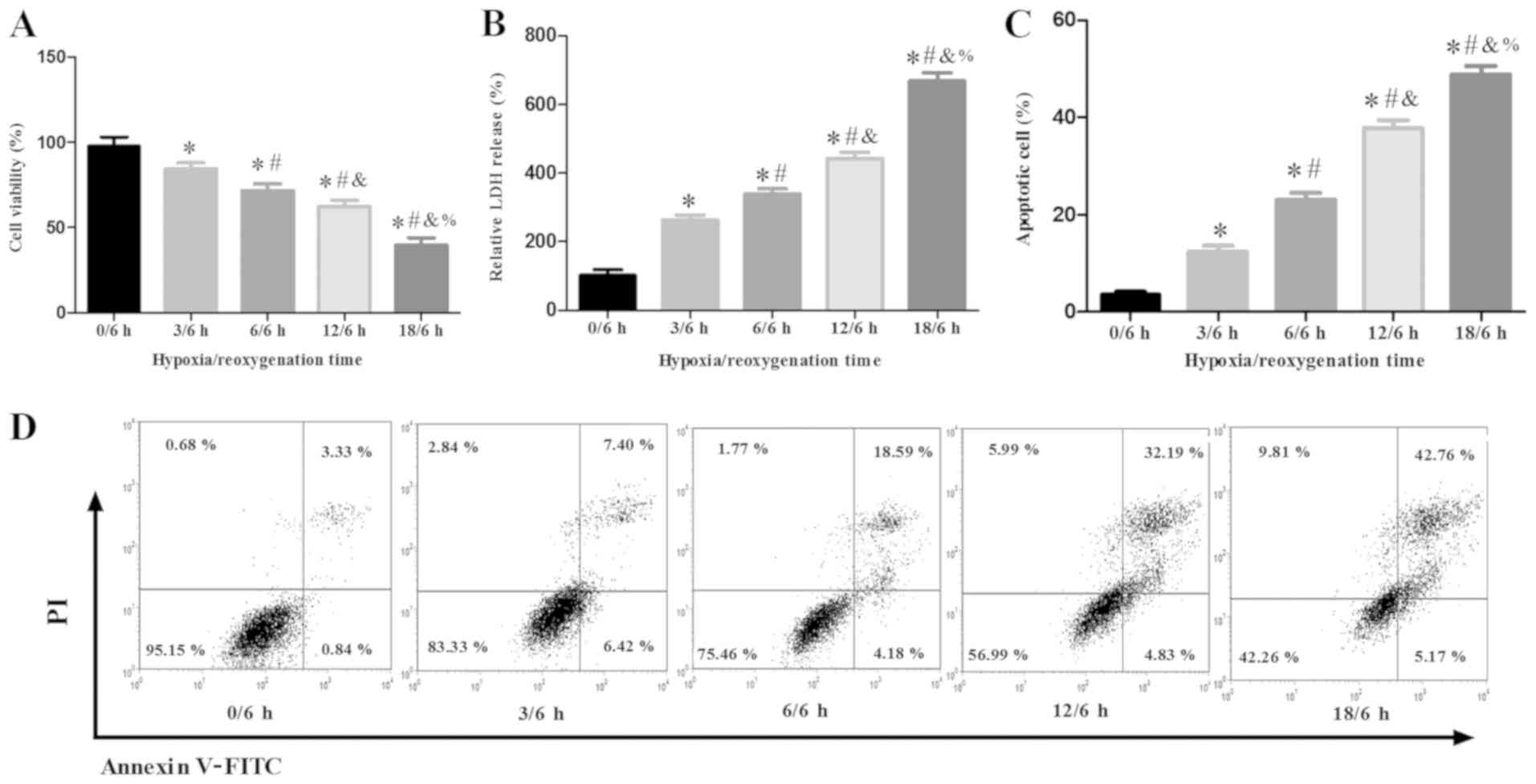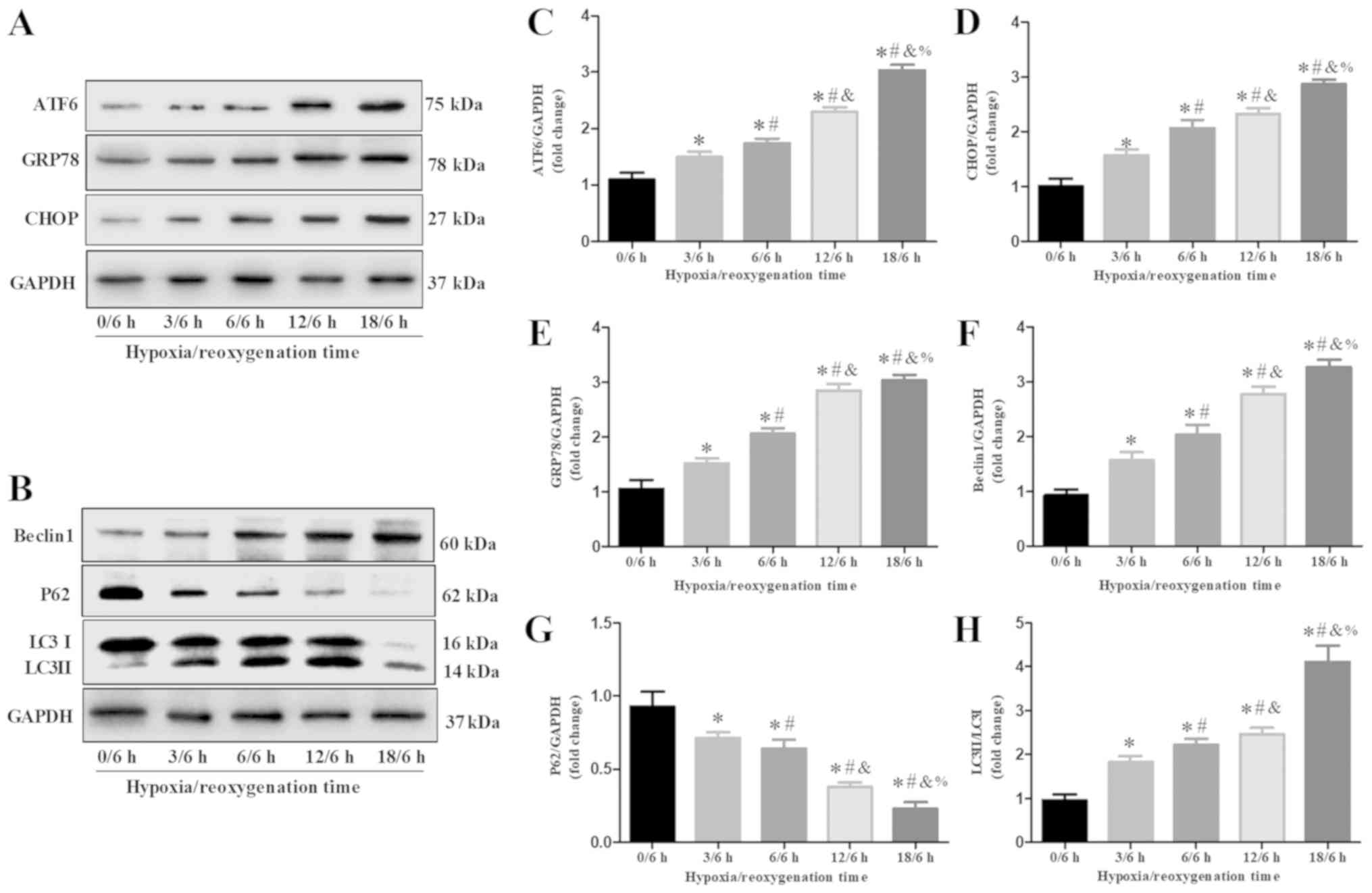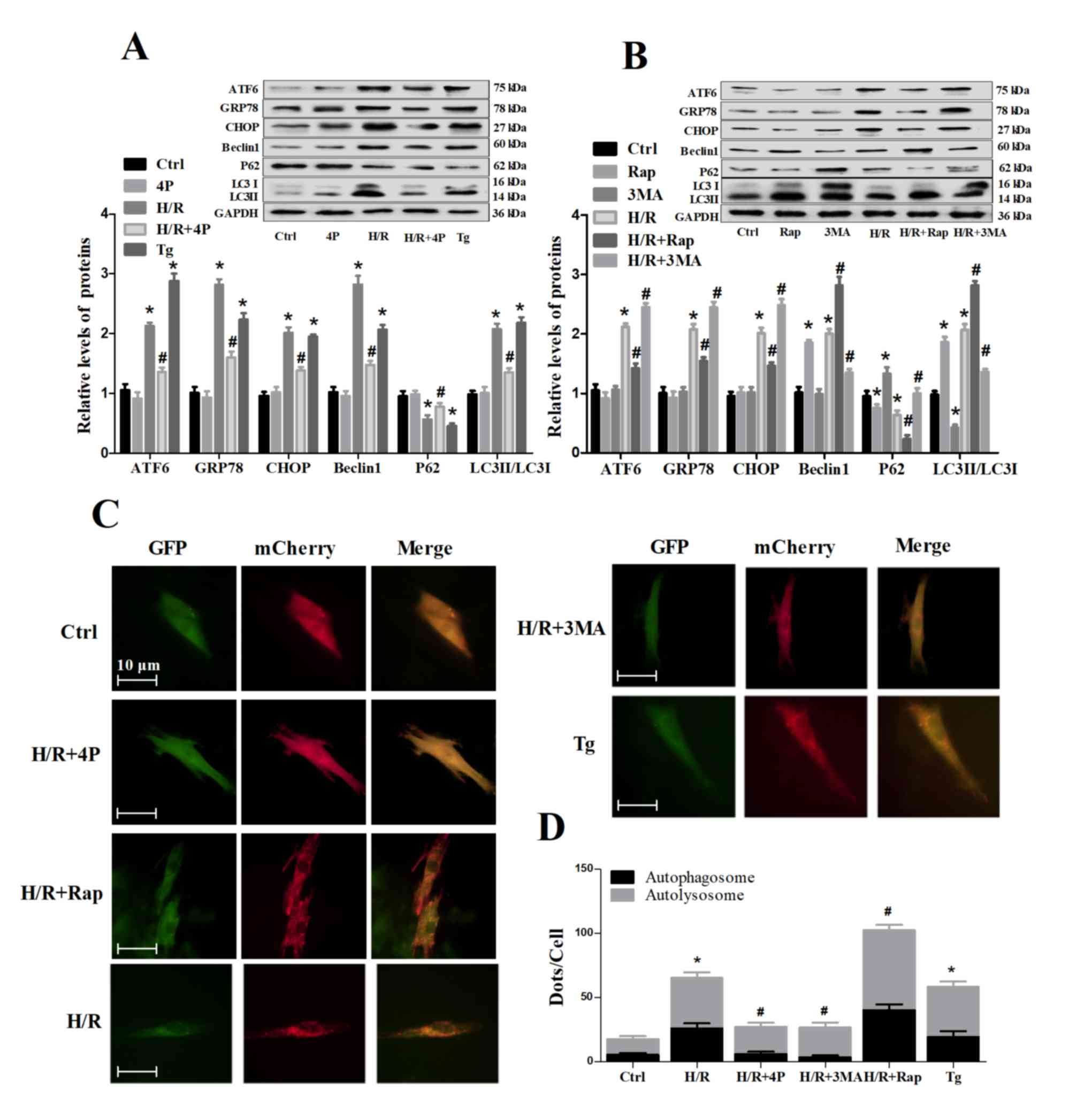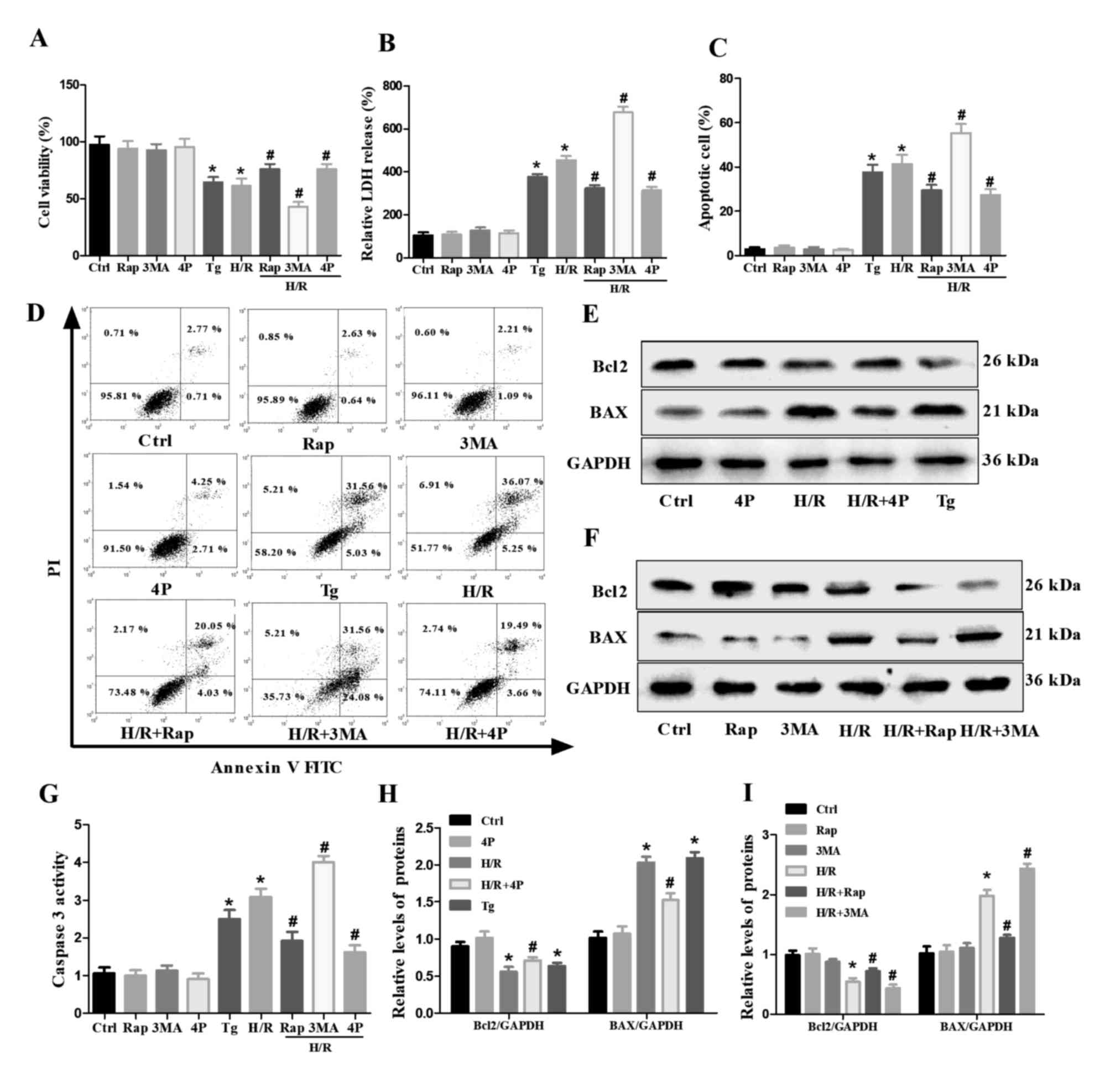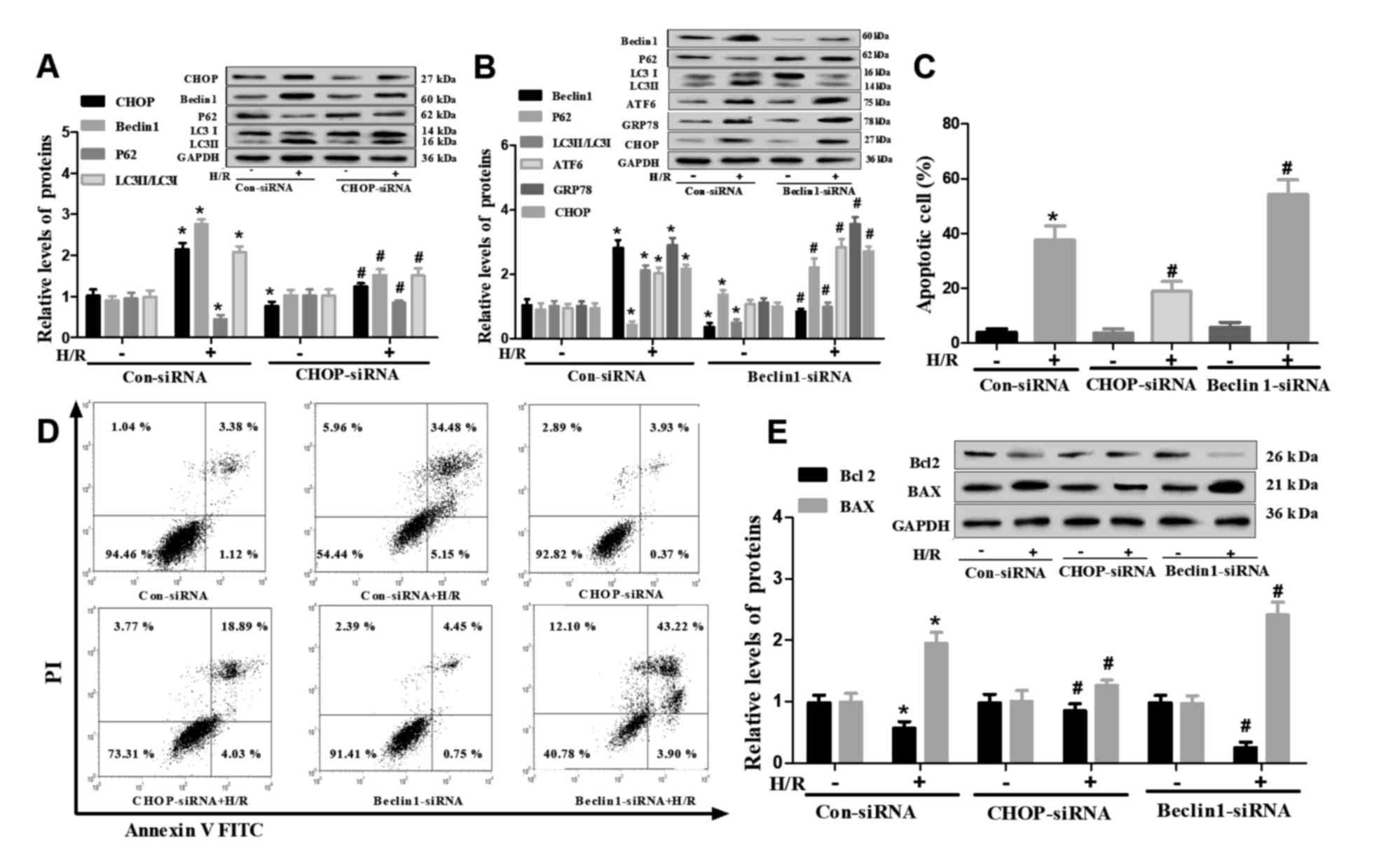|
1
|
Kalkman DN, Aquino M, Claessen BE, Baber
U, Guedeney P, Sorrentino S, Vogel B, de Winter RJ, Sweeny J,
Kovacic JC, et al: Residual inflammatory risk and the impact on
clinical outcomes in patients after percutaneous coronary
interventions. Eur Heart J. 39:4101–4108. 2018. View Article : Google Scholar : PubMed/NCBI
|
|
2
|
Ma X, Liu H, Foyil SR, Godar RJ,
Weinheimer CJ, Hill JA and Diwan A: Impaired autophagosome
clearance contributes to cardiomyocyte death in
ischemia/reperfusion injury. Circulation. 125:3170–3181. 2012.
View Article : Google Scholar : PubMed/NCBI
|
|
3
|
Yang Y, Ding S, Xu G, Chen F and Ding F:
MicroRNA-15a inhibition protects against
hypoxia/reoxygenation-induced apoptosis of cardiomyocytes by
targeting mothers against decapentaplegic homolog 7. Mol Med Rep.
15:3699–3705. 2017. View Article : Google Scholar : PubMed/NCBI
|
|
4
|
Liao F, Zheng Y, Cai J, Fan J, Wang J,
Yang J, Cui Q, Xu G, Tang C and Geng B: Catestatin attenuates
endoplasmic reticulum induced cell apoptosis by activation type 2
muscarinic acetylcholine receptor in cardiac ischemia/reperfusion.
Sci Rep. 5:165902015. View Article : Google Scholar : PubMed/NCBI
|
|
5
|
Yao T, Ying X, Zhao Y, Yuan A, He Q, Tong
H, Ding S, Liu J, Peng X, Gao E, et al: Vitamin D receptor
activation protects against myocardial reperfusion injury through
inhibition of apoptosis and modulation of autophagy. Antioxid Redox
Signal. 22:633–650. 2015. View Article : Google Scholar : PubMed/NCBI
|
|
6
|
Ma Y, Shimizu Y, Mann MJ, Jin Y and
Hendershot LM: Plasma cell differentiation initiates a limited ER
stress response by specifically suppressing the PERK-dependent
branch of the unfolded protein response. Cell Stress Chaperones.
15:281–293. 2010. View Article : Google Scholar : PubMed/NCBI
|
|
7
|
Rashid HO, Yadav RK, Kim HR and Chae HJ:
ER stress: Autophagy induction, inhibition and selection.
Autophagy. 11:1956–1977. 2015. View Article : Google Scholar : PubMed/NCBI
|
|
8
|
Gatica D, Chiong M, Lavandero S and
Klionsky DJ: Molecular mechanisms of autophagy in the
cardiovascular system. Circ Res. 116:456–467. 2015. View Article : Google Scholar : PubMed/NCBI
|
|
9
|
Salabei JK and Conklin DJ: Cardiovascular
autophagy: Crossroads of pathology, pharmacology and toxicology.
Cardiovasc Toxicol. 13:220–229. 2013. View Article : Google Scholar : PubMed/NCBI
|
|
10
|
Guo JJ, Xu FQ, Li YH, Li J, Liu X, Wang
XF, Hu LG and An Y: Alginate oligosaccharide alleviates myocardial
reperfusion injury by inhibiting nitrative and oxidative stress and
endoplasmic reticulum stress-mediated apoptosis. Drug Des Dev Ther.
11:2387–2397. 2017. View Article : Google Scholar
|
|
11
|
Li H, Zhang X, Tan J, Sun L, Xu LH, Jiang
YG, Lou JS, Shi XY and Mi WD: Propofol postconditioning protects
H9c2 cells from hypoxia/reoxygenation injury by inducing autophagy
via the SAPK/JNK pathway. Mol Med Rep. 17:4573–4580.
2018.PubMed/NCBI
|
|
12
|
Ding WX, Ni HM, Gao W, Hou YF, Melan MA,
Chen X, Stolz DB, Shao ZM and Yin XM: Differential effects of
endoplasmic reticulum stress-induced autophagy on cell survival. J
Biol Chem. 282:4702–4710. 2007. View Article : Google Scholar : PubMed/NCBI
|
|
13
|
Wang C, Zhang S, Ma R, Zhang X, Zhang C,
Li B, Niu Q, Chen J, Xia T, Li P, et al: Roles of endoplasmic
reticulum stress, apoptosis and autophagy in
2,2′,4,4′-tetrabromodiphenyl ether-induced rat ovarian injury.
Reprod Toxicol. 65:187–193. 2016. View Article : Google Scholar : PubMed/NCBI
|
|
14
|
Livak KJ and Schmittgen TD: Analysis of
relative gene expression data using real-time quantitative PCR and
the 2(-Delta Delta C(T)) method. Methods. 25:402–408. 2001.
View Article : Google Scholar : PubMed/NCBI
|
|
15
|
Du Y, Wang M, Liu X, Zhang J, Xu X, Xu H,
Sun G and Sun X: Araloside C prevents hypoxia/reoxygenation-induced
endoplasmic reticulum stress via increasing heat shock protein 90
in H9c2 cardiomyocytes. Front Pharmacol. 9:1802018. View Article : Google Scholar : PubMed/NCBI
|
|
16
|
Sano R and Reed JC: ER stress-induced cell
death mechanisms. Biochim Biophys Acta. 1833:3460–3470. 2013.
View Article : Google Scholar : PubMed/NCBI
|
|
17
|
Lee AS: The ER chaperone and signaling
regulator GRP78/BiP as a monitor of endoplasmic reticulum stress.
Methods. 35:373–381. 2005. View Article : Google Scholar : PubMed/NCBI
|
|
18
|
Harding HP, Novoa I, Zhang Y, Zeng H, Wek
R, Schapira M and Ron D: Regulated translation initiation controls
stress-induced gene expression in mammalian cells. Mol Cell.
6:1099–1108. 2000. View Article : Google Scholar : PubMed/NCBI
|
|
19
|
Gorman AM, Healy SJ, Jäger R and Samali A:
Stress management at the ER: Regulators of ER stress-induced
apoptosis. Pharmacol Ther. 134:306–316. 2012. View Article : Google Scholar : PubMed/NCBI
|
|
20
|
Przyklenk K, Dong Y, Undyala VV and
Whittaker P: Autophagy as a therapeutic target for
ischaemia/reperfusion injury? Concepts, controversies, and
challenges. Cardiovasc Res. 94:197–205. 2012. View Article : Google Scholar : PubMed/NCBI
|
|
21
|
Matsui Y, Takagi H, Qu X, Abdellatif M,
Sakoda H, Asano T, Levine B and Sadoshima J: Distinct roles of
autophagy in the heart during ischemia and reperfusion: Roles of
AMP-activated protein kinase and Beclin 1 in mediating autophagy.
Circ Res. 100:914–922. 2007. View Article : Google Scholar : PubMed/NCBI
|
|
22
|
Høyer-Hansen M and Jäättelä M: Connecting
endoplasmic reticulum stress to autophagy by unfolded protein
response and calcium. Cell Death Differ. 14:1576–1582. 2007.
View Article : Google Scholar : PubMed/NCBI
|
|
23
|
Kawakami T, Inagi R, Takano H, Sato S,
Ingelfinger JR, Fujita T and Nangaku M: Endoplasmic reticulum
stress induces autophagy in renal proximal tubular cells. Nephrol
Dial Transplant. 24:2665–2672. 2009. View Article : Google Scholar : PubMed/NCBI
|
|
24
|
Rouschop KM, van den Beucken T, Dubois L,
Niessen H, Bussink J, Savelkouls K, Keulers T, Mujcic H, Landuyt W,
Voncken JW, et al: The unfolded protein response protects human
tumor cells during hypoxia through regulation of the autophagy
genes MAP1LC3B and ATG5. J Clin Invest. 120:127–141. 2010.
View Article : Google Scholar : PubMed/NCBI
|
|
25
|
Doyle KM, Kennedy D, Gorman AM, Gupta S,
Healy SJ and Samali A: Unfolded proteins and endoplasmic reticulum
stress in neurodegenerative disorders. J Cell Mol Med.
15:2025–2039. 2011. View Article : Google Scholar : PubMed/NCBI
|
|
26
|
Gao Y, Yang H, Chi J, Xu Q, Zhao L and
Yang W, Liu W and Yang W: Hydrogen gas attenuates myocardial
ischemia reperfusion injury independent of postconditioning in rats
by attenuating endoplasmic reticulum stress-induced Autophagy. Cell
Physiol Biochem. 43:1503–1514. 2017. View Article : Google Scholar : PubMed/NCBI
|
|
27
|
Wang Y, Wang Q, Zhang L, Ke Z, Zhao Y,
Wang D, Chen H, Jiang X, Gu M, Fan S and Huang C: Coptisine
protects cardiomyocyte against hypoxia/reoxygenation-induced damage
via inhibition of autophagy. Biochem Biophys Res Commun.
490:231–238. 2017. View Article : Google Scholar : PubMed/NCBI
|
|
28
|
Mirzayans R, Andrais B, Kumar P and Murray
D: The growing complexity of cancer cell response to DNA-damaging
agents: Caspase 3 mediates cell death or survival? Int J Mol Sci.
17(pii): E7082016. View Article : Google Scholar : PubMed/NCBI
|
|
29
|
Hardwick JM and Soane L: Multiple
functions of BCL-2 family proteins. Cold Spring Harb Perspect Biol.
5(pii): a0087222013.PubMed/NCBI
|
|
30
|
Sobhan PK, Seervi M, Deb L, Varghese S,
Soman A, Joseph J, Mathew KA, Raghu G, Thomas G, E S, et al:
Calpain and reactive oxygen species targets Bax for mitochondrial
permeabilisation and caspase activation in zerumbone induced
apoptosis. PLoS One. 8:e593502013. View Article : Google Scholar : PubMed/NCBI
|
|
31
|
Su J, Zhou L, Kong X, Yang X, Xiang X,
Zhang Y, Li X and Sun L: Endoplasmic reticulum is at the crossroads
of autophagy, inflammation, and apoptosis signaling pathways and
participates in the pathogenesis of diabetes mellitus. J Diabetes
Res. 2013:1934612013. View Article : Google Scholar : PubMed/NCBI
|
|
32
|
Marciniak SJ, Yun CY, Oyadomari S, Novoa
I, Zhang Y, Jungreis R, Nagata K, Harding HP and Ron D: CHOP
induces death by promoting protein synthesis and oxidation in the
stressed endoplasmic reticulum. Genes Dev. 18:3066–3077. 2004.
View Article : Google Scholar : PubMed/NCBI
|
|
33
|
Kang R, Zeh HJ, Lotze MT and Tang D: The
beclin 1 network regulates autophagy and apoptosis. Cell Death
Differ. 18:571–580. 2011. View Article : Google Scholar : PubMed/NCBI
|















